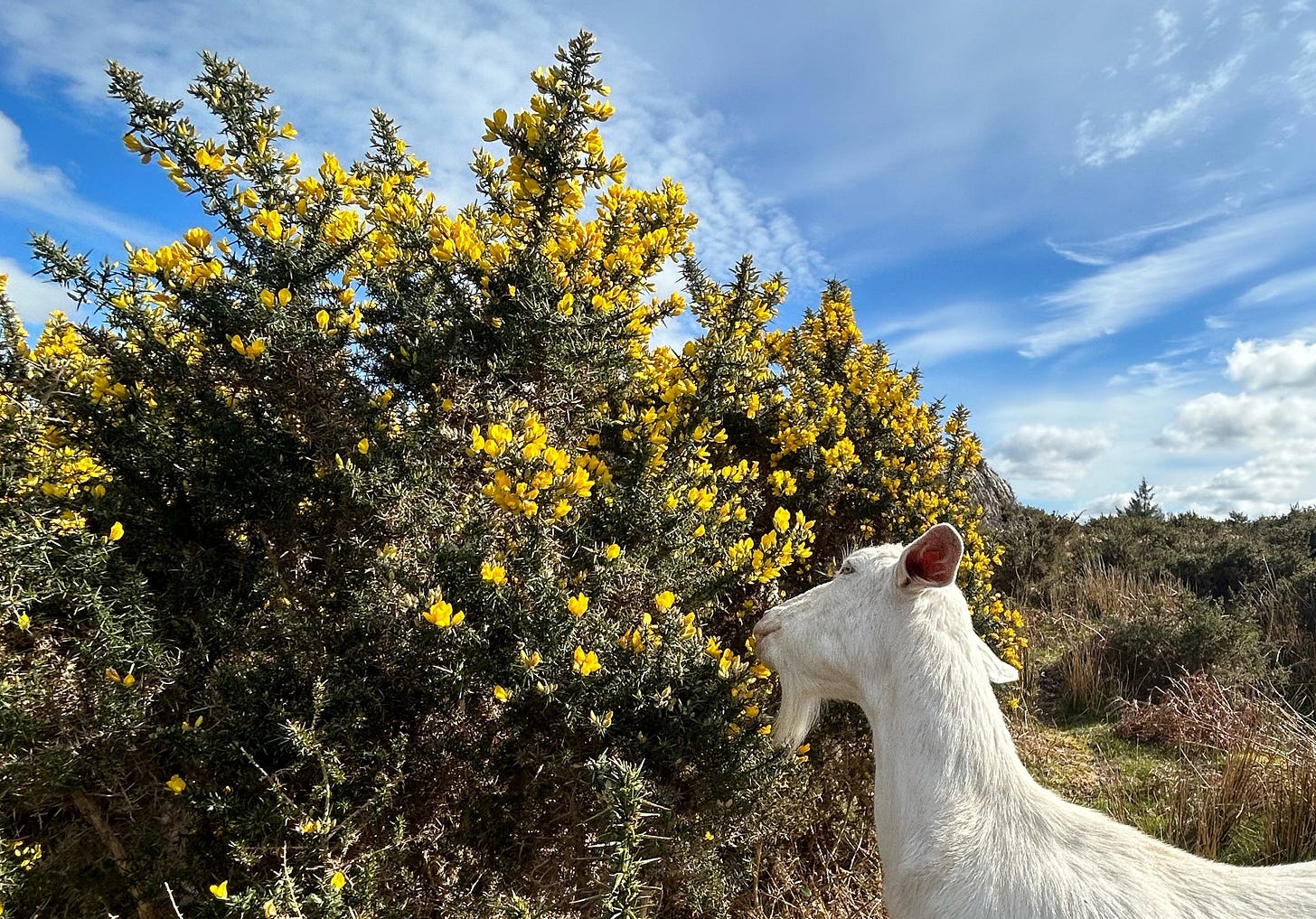Spring on the Hill
a seasonal roundup of going ons on the farm
A pair of ducks—maybe teal, I’m not sure—small and dark against the evening sky, caught my eye, flapping over the holly cliff with necks outstretched before circling in to land on the upper flax pond. That was a few weeks ago, I haven’t seen them again since, but there are tracks through the pond weeds and Husband assures me teal are hard to spot, coming in only to nest at night. Besides, I haven’t spent much time around the flax ponds lately; I am needed on the farmyard. Spring is my busiest time.
I am up throughout the night on lambing watch and from dusk til dawn snipe beat their drum feathers and dance courtship rituals overhead. Throughout the day, pheasants out shout them. Our wet, open hill land is good for water- and ground-nesting birds. On one of our earliest forays here, before the land was ours, we were thrilled to find a hatched-out, blue-green, duck eggshell by the lower flax pond (but we didn…

